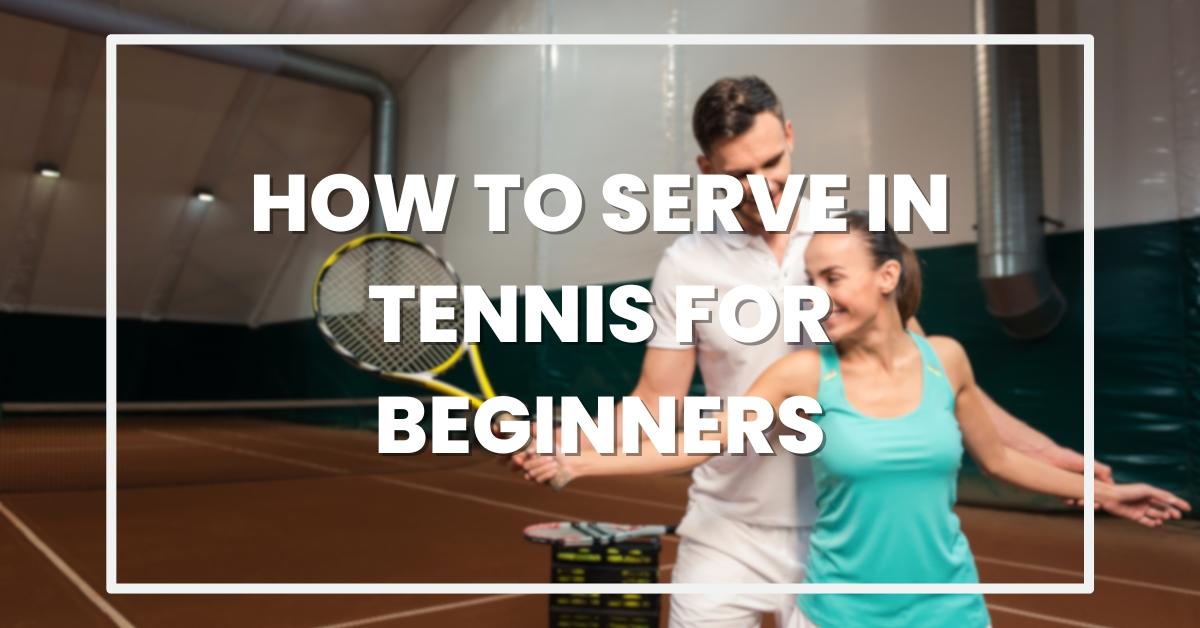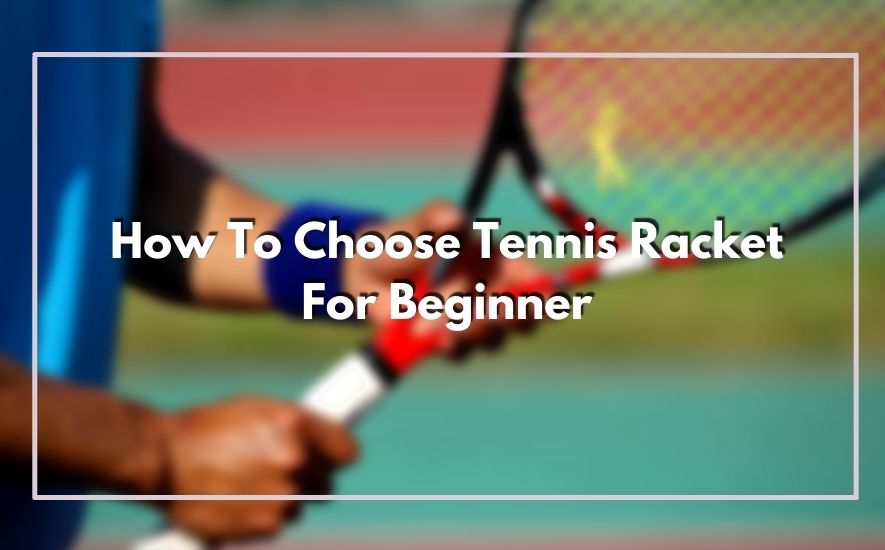In tennis, one of the most critical aspects of the game is the serve. It sets the tone for each point and can provide a significant advantage if executed properly. Mastering the serve takes practice, patience, and a solid understanding of the mechanics involved. This introduction aims to provide an easy-to-understand overview of how to serve in tennis.
The first step in learning to serve is to establish a proper stance. Stand with your non-dominant foot slightly ahead, knees bent, and weight evenly distributed. Your dominant hand should grip the racket’s handle, and the non-dominant hand should rest comfortably on the racket’s throat or strings. Next, toss the ball slightly in front of your dominant side, ensuring a consistent toss height and trajectory.
As the ball reaches its peak, initiate the kinetic chain by rotating your hips and shoulders towards the net. Simultaneously, bend your knees and transfer your weight from the back foot to the front foot. This motion should generate power and momentum for your serving arm. With a fluid motion, extend your racket arm and make contact with the ball, aiming to hit it at the optimal height for your desired serve type (flat, slice, or kick).
After contact, follow through by allowing your racket arm to continue across your body, ensuring a complete and balanced finish. Maintain your balance and recover for the next shot. Consistent practice and attention to technique will help you develop a reliable and effective serve in tennis.
In this guide, we will tell you how to serve in tennis, from the basics of the grip to the advanced techniques that can help you win more points. We will also provide tips on how to improve your serve speed, accuracy, and consistency.
Table of Contents
How to Serve in Tennis
Serving in tennis is one of the most important shots in the game. It is the only shot that a player has complete control over, and it can be used to set up a point or win it outright. A good serve can put your opponent on the defensive and give you a significant advantage in the rally Serving in tennis is a crucial skill that sets the tone for the entire point. Here’s a step-by-step guide to help you master the serve.
Stance: Stand behind the baseline, with your feet shoulder-width apart and knees slightly bent.
Toss: Hold the ball in your non-dominant hand and toss it high enough to reach your hitting zone.
Backswing: Take the racket back smoothly, keeping your head down and eyes on the ball.
Contact: Hit the ball at its highest point, with your racket face slightly open.
Follow-Through: Continue swinging your racket forward after contact, finishing with your racket above your head.
Practice these steps regularly to improve your serve accuracy, power, and consistency.
Grip
Hold the racket with a continental grip, placing your index finger on the bevel between the two main faces of the racket.
Stance
Stand behind the baseline with your feet shoulder-width apart and knees slightly bent. The ball should be tossed about 6-8 feet in the air and slightly in front of you.
Toss
Toss the ball high enough to give yourself time to swing, but not so high that it becomes difficult to hit. The toss should be consistent and accurate.
Swing
As the ball descends, swing the racket back and then forward, contacting the ball with a flat or slightly upward motion. Aim to hit the ball just above the net.
Spin
To add spin to your serve, hit the ball with a slight side-to-side motion. This will create topspin or backspin, which can make the ball bounce more or less, respectively.
Placement
Aim to serve the ball deep into the court, making it difficult for your opponent to return. You can also vary the placement of your serve, hitting it wide or down the line.
Power
Generate power in your serve by using a strong grip, swinging with good technique, and hitting the ball in the center of the racket.
Consistency
Practice regularly to improve your consistency in serving. Aim to hit the ball in the same spot every time and with the same amount of power.
With consistent practice and attention to technique, you’ll develop a powerful and effective serve. Remember to keep your eye on the ball, maintain a balanced stance, and follow through with your swing. By mastering the serve, you’ll not only gain an advantage in your matches but also enhance your overall tennis game. So, keep practicing, stay focused, and let your serves soar!
how to serve in tennis better
To serve in tennis better, it’s essential to focus on technique and consistency. Start by ensuring you have a comfortable grip on the racket, usually a continental grip. Stand sideways to the baseline with your feet shoulder-width apart. Toss the ball slightly in front of you and at the right height, allowing your arm to fully extend during the serve. Practice swinging smoothly, using your legs and core to generate power. Consistent practice will help you develop a more accurate and powerful serve.
how wide can you stand to serve in tennis?
When considering how wide you can stand to serve in tennis, it’s about finding the right balance between stability and flexibility. Your stance should be wide enough to provide a solid base but not so wide that it restricts your movement. Typically, shoulder-width apart is a good starting point. Experiment with slightly wider or narrower stances to see what feels most comfortable and allows you to serve effectively while maintaining your balance.
how to do a good serve in tennis
To do a good serve in tennis, focus on the key elements of a strong serve: grip, stance, toss, and swing. Use a continental grip for better control and versatility. Stand with your feet shoulder-width apart, and toss the ball in front of you and slightly to the right if you’re right-handed. As you swing, use a smooth motion, starting with your legs and transferring power through your body to your racket. Aim to hit the ball at the highest point of your toss, and follow through with your swing to ensure accuracy and power.
how to serve in tennis slow motion
Serving in tennis in slow motion can help you understand and improve your technique. Break down each part of the serve: the grip, stance, toss, and swing. Move slowly through each step, paying attention to the position of your body, the motion of your arm, and the timing of your swing. Practicing in slow motion allows you to correct any mistakes and develop muscle memory for a more effective serve. Gradually increase your speed as you become more comfortable with the motion.
how to serve table tennis with spin
To serve table tennis with spin, focus on the contact point and the angle of your paddle. Hold the paddle with a firm grip, and toss the ball slightly above your head. As the ball descends, strike it with a quick flick of your wrist, brushing the ball with the paddle to impart spin. The angle at which you hit the ball will determine the type of spin—topspin, backspin, or sidespin. Practice different spins to see how they affect the ball’s trajectory and speed, making your serves more challenging for your opponent to return.
Grip the racket correctly.
The correct grip for a serve is the Continental grip. To hold the racket with a Continental grip, place your hand on the racket so that the heel of your hand is resting on the bottom of the grip and your thumb is pointing towards the top of the racket. Your fingers should be spread out evenly around the grip.
Stand with your feet shoulder-width apart.
Your feet should be pointing towards the net and your knees should be slightly bent. Your weight should be evenly distributed between your feet.
Toss the ball up in the air.
The ball should be tossed up to a height of about 6 feet. It should be tossed slightly in front of you and to the side of your body.
Swing the racket back and then forward.
As the ball is coming down, swing the racket back and then forward. The racket should make contact with the ball at the highest point of its swing. Your swing should be smooth and fluid.
Follow through with your swing.
After you have hit the ball, continue to swing the racket forward. This will help to give the ball more power and accuracy.
Serving is a skill that takes practice to master. However, by following these tips, you can learn how to serve well and improve your chances of winning matches.
Grip and Stance
The foundation of a good serve starts with the right grip and stance. Many players prefer the continental grip for serving, as it allows for versatility in shot selection. Your stance should be comfortable and balanced, with your feet shoulder-width apart and your non-dominant foot slightly forward.
Ball Toss
A consistent ball toss is key to a reliable serve. Practice tossing the ball to the same spot each time, slightly in front of you and at a height that allows you to hit it at full arm extension. This consistency will help you develop muscle memory and improve your timing.
Types of Serves
There are several types of serves you can use in tennis. The flat serve is the most common and fastest, while the slice serve adds spin and can be effective for pulling your opponent wide. The kick serve, also known as the topspin serve, is great for consistency and can be challenging for opponents to return.
Flat Serve Technique
To hit a flat serve, contact the ball at the highest point possible and aim to hit through the center of the ball. This serve relies on power and placement rather than spin.
Slice Serve Technique
For a slice serve, brush the side of the ball from left to right (for right-handed players) to create a sidespin. This serve can be particularly effective when serving wide in the deuce court.
Kick Serve Technique
The kick serve involves hitting up and across the back of the ball to generate topspin. This serve bounces high and can be an excellent second-serve option.
Service Motion
Your service motion should be fluid and continuous. Start with a relaxed stance, then coil your body by rotating your shoulders and hips. As you uncoil, transfer your weight forward and extend your arm to make contact with the ball.
Follow-through
After hitting the ball, continue your motion with a full follow-through. This helps generate power and prevents injury. Your racquet should finish on the opposite side of your body from where it started.
Serving Strategy
Mix up your serves to keep your opponent guessing. Vary your placement, speed, and spin. Consider your opponent’s strengths and weaknesses when choosing where to serve.
Second Serve
Your second serve should prioritize consistency over power. Many players opt for a kick serve or a slower slice serve to ensure they get the ball in play and avoid a double fault.
Serving under Pressure
When serving on important points, focus on your routine and breathe deeply to stay calm. Stick to serves you’re confident with rather than trying risky shots.
Practice Drills
Improve your serve with targeted practice drills. Try serving to specific spots on the court, or practice serving under match-like conditions. You can also use a ball machine or a wall to work on your technique.
Common Mistakes
Watch out for common serving errors like tossing the ball too far forward or back, not using your legs for power, or rushing your motion. Video analysis can be helpful in identifying and correcting these issues.
Mental Approach
Approach your serve with confidence. Visualize successful serves and maintain a positive attitude, even if you miss a few. Remember, even professional tennis players don’t make every serve.
Improving Your Serve
By focusing on these aspects of serving, you can develop a reliable and effective serve that will enhance your overall tennis game. Remember, improvement takes time and consistent practice. Whether you’re serving on a Nintendo Switch tennis game or on an actual court, these principles apply. Keep at it, and soon you’ll be serving with confidence in any tennis match or friendly game.
Conclusion
Serving in tennis is like learning to ride a bike – it takes practice, but once you get it, you’re on a roll! Remember, there’s no one-size-fits-all approach. Find what works for you, whether it’s a powerful serve or a tricky spin. Keep your eyes on the ball, stay relaxed, and trust your instincts. Don’t get discouraged if you hit a few into the net – even pros make mistakes. The key is to have fun and keep at it. Before you know it, you’ll be serving up aces and feeling confident on the court. So grab your racket, head to the court, and give it your best shot. Who knows? You might surprise yourself with how quickly you improve. Tennis is all about enjoying the game, so serve with a smile!
FAQs
What’s the most important part of a tennis serve?
The toss is crucial in a tennis serve. It sets up everything else. A good toss should be consistent and placed slightly in front of you, allowing you to hit the ball at its highest point. Practice your toss regularly, even without hitting the ball. A steady toss helps you maintain balance and control, leading to more accurate and powerful serves.
How can I improve my serve accuracy?
To boost your serve accuracy, focus on your follow-through. After hitting the ball, let your racket continue its motion across your body. This helps direct the ball where you want it to go. Also, pick a specific target on the service box and aim for it every time. Start with larger targets and gradually make them smaller as you improve. Remember, consistency beats power when it comes to accuracy.
What’s a good way to add spin to my serve?
Adding spin to your serve can make it trickier for your opponent to return. For topspin, brush up the back of the ball as you hit it. For slice, brush across the ball from right to left (for right-handed players). The key is to keep your wrist relaxed and use a fluid motion. Start with a gentle spin and gradually increase it as you get more comfortable. Experiment with different types of spin to find what works best for you.
How do I increase my serve speed?
To boost your serve speed, work on your leg drive and timing. Bend your knees more before you serve, then push up explosively as you hit the ball. This transfers energy from your legs through your body to the racket. Also, try to hit the ball at the highest point possible – this gives you more time to generate racket head speed. Remember, technique matters more than strength, so focus on smooth, coordinated movements rather than just swinging harder.
What should I do if I’m struggling with my serve during a match?
If your serve isn’t working well during a match, don’t panic. Simplify your motion and focus on getting the ball in play rather than going for aces. Slow down your serve routine and take deep breaths to stay calm. If you’re double-faulting, aim your first serve to a safer spot in the service box. Remember, a slower serve that goes in is better than a fast one that misses. Stay positive and patient – your serve will likely improve as the match goes on.



